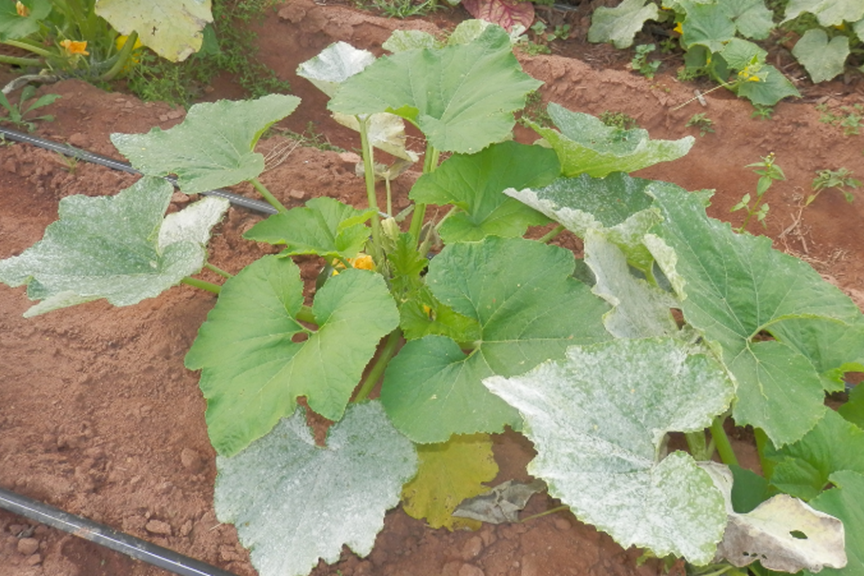Powdery Mildew Control in Your Garden
Oidium spp., Podosphaera spp., and Sphaerotheca spp.

Oidium spp., Podosphaera spp., and Sphaerotheca spp.

Powdery mildew refers to a group of fungal pathogens that attack a wide variety of plants, including edible and ornamental plants. The pathogen can be host specific (e.g., Podosphaera leucotricha attacks Apples and Pears), while others can attack a wide range of different types of plants (Oidium affects Cucurbits, Grapes and Strawberries). Depending on the pathogen, Powdery Mildew outbreaks can be prevalent in warm and humid, or warm and dry conditions.
Powdery Mildew is one of the most easily recognisable fungal diseases as the leaves appear to be covered in a white powder or ash-grey film. Fungal spores are easily dispersed by wind and rain which land on leaves and cause infection. It generally only affects leaf surfaces, but severe infection can weaken shoots and cause flower buds to fail.

Here is how to recognise powdery mildew and how to control the disease on edibles and ornamental plants.
Small white powdery spots appear on the surface of leaves and gradually increase in size to cover the whole leaf in a white coating or ash-grey film. Lower, mature leaves usually succumb first to attack, but the pathogens can also affect buds, stems, flowers, and fruit. Young leaves may yellow and become slightly puckered along the edges, while flower buds may fail to open, or the petals are distorted. Older leaves eventually turn brown or black, and overall plant growth is reduced. In severe cases, entire plants can be affected.
On Strawberries, the white spots or ash-grey coating on leaves may not always be present. Instead the leaves curl upward, and purple blotches appear on the upper leaf surface. Flowers may prematurely die, or immature fruit remain small and hard. Mature fruit maintain a dull appearance.


To help control Powdery Mildew infections on vegetables (except Cucumbers and Rockmelon), spray at earliest sign of the disease with Yates Mancozeb Plus Garden Fungicide and Miticide. Repeat as needed, especially if conditions are favourable, such as extended periods of warm and humid weather. To help control fungal growth on Cucumbers, Rockmelon and other vegetables, spray with Yates Lime Sulfur. For roses and ornamentals, Powdery Mildew can be treated with Yates Rose Gun Black Spot & Insect Killer or Yates Rose Shield Concentrate.

To help prevent Powdery Mildew on certain plants, spraying at the right time is key. If treating Apples, you will need to apply Yates Lime Sulfur during dormancy to late bud swell. For Grapes, apply Yates Liquid Copper when shoots are 10 cm long and repeat as needed.
The ideal conditions for Powdery Mildew are warm and humid or warm and dry weather. To reduce the risk of infection, avoid overhead watering, use disease-free seeds or planting material, and ensure there is sufficient spacing between plants to promote good air circulation. To help reduce the spread of Powdery Mildew spores, remove the worst infected leaves and bin them. Ensure you sterilise secateurs or pruning tools between cuts with a diluted bleach solution to help prevent the disease from spreading. These preventative measures will also help to minimise other plant diseases.

Occasionally, you may see small yellow and black Lady Beetles on Powdery Mildew-infected plants. These are fungus-eating Lady Beetles and they can help reduce Powdery Mildew development. When spraying plants to control Powdery Mildew, avoid spraying while these lady beetles are present.